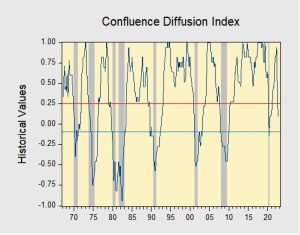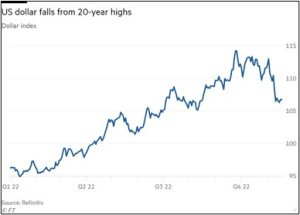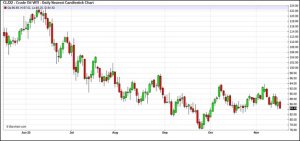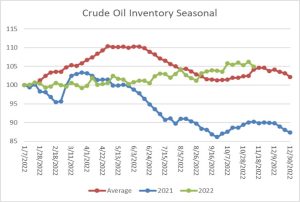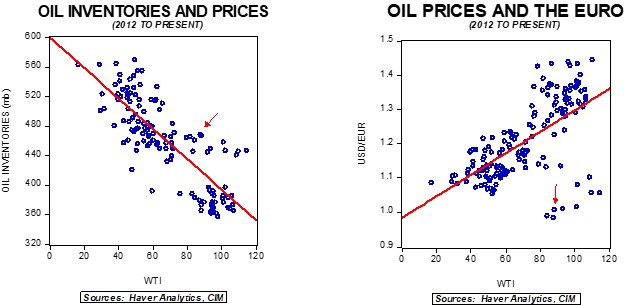by Patrick Fearon-Hernandez, CFA, and Thomas Wash
[Posted: 9:30 AM EDT] | PDF
Our Comment today opens with an update on the Russia-Ukraine war. We next review a wide range of other international and U.S. developments with the potential to affect the financial markets today, including a hawkish statement on the Eurozone’s monetary policy by ECB President Lagarde and a request from President Biden that Congress take action to thwart a threatened railroad strike.
Russia-Ukraine: As the Ukrainian military continues to press its counteroffensive in the country’s northeast, east, and south, the Russian military is reportedly planning a new wave of artillery, missile, and kamikaze drone strikes against Ukraine’s civilian infrastructure in an effort to freeze the Ukrainian population into submission. As we have mentioned previously, that effort has failed so far, raising the question of whether Russia is wasting its remaining precision-weapons inventory for little gain.
- Separately, as Western Europe continues scrambling to replace natural gas supplies cut off by Russia in retaliation for its support of Ukraine, Germany has signed a small-scale deal to import gas from Qatar for 15 years beginning in 2026. The emirate is one of the world’s largest gas exporters, but this will be its first long-term deal to send supplies to Europe. All the same, the deal will do nothing to help Western Europe regain its gas supplies this winter or, perhaps more crucially, next winter.
- French President Macron arrives in Washington today for a four-day state visit in which he is expected to discuss the joint U.S.-European approach to the war. Macron will likely air a range of European grievances involving the belief that the U.S. is profiteering from the conflict by selling enormous volumes of gas and weapons to Europe at high prices.
Eurozone: Yesterday, European Central Bank President Lagarde said that in spite of encouraging signs that Eurozone inflation may be set to moderate, the ECB is not yet finished raising interest rates and still “has a long way to go” in tightening monetary policy. The hawkishness of Lagarde’s statement suggests that the ECB may not be as ready to slow the pace of its rate hikes as the Federal Reserve is, which probably goes far in explaining the euro’s strength against the dollar in recent days.
China: Although new COVID-19 infections remain near record highs, health authorities today have begun downplaying the risks in an apparent effort to quell concerns about widespread new lockdowns. As we reported in our Comment yesterday, it also appears that Chinese police and security forces have suppressed the extraordinary wave of anti-government protests that began late last week.
- So far this morning, those developments have sparked a sharp rebound in Chinese stock values as investors bet that the crisis will force the government to loosen its highly disruptive Zero-COVID policies.
- However, investors should take note of how quickly China’s police and security forces gained control over the weekend protests. That could well encourage President Xi to keep his Zero-COVID policies in place, especially since he had already allowed a modest loosening of the policies in recent weeks.
China-Djibouti: A new report from the World Bank indicates that Djibouti has suspended its debt repayments to China as it faces major economic difficulties. Djibouti has received $1.5 billion of funding from China, largely as a part of President Xi’s “Belt and Road” initiative that seeks to fund roads, ports, and other trade infrastructure in mostly developing countries. In return, China had hoped to build political influence and support, and it had even secured a military base in Djibouti. In recent years, however, China has had to face the fact that its loans won’t necessarily be repaid or be spent wisely, putting a damper on new lending under the program.
China-United States: The People’s Liberation Army claimed that it warned away a U.S. Navy warship that had entered waters near the Spratly Islands in the South China Sea on Tuesday in what was apparently a “freedom of navigation operation.” Like previous such incidents, this one highlights the continuing and growing geopolitical tension between the U.S. and China, which has already had negative impacts on Chinese stocks.
U.S. Monetary Policy: New York FRB President Williams warned yesterday that the Fed has no choice but to continue raising interest rates and tightening monetary policy to bring down high inflation. In fact, he said he didn’t expect the Fed to start cutting rates again until 2024. As a consequence, he warned that the U.S. unemployment rate could rise to between 4.5% and 5.0% by the end of 2023.
- Although U.S. monetary officials are intent on continuing to hike rates, they do look like they will soon shift to smaller hikes of 50 basis points at a time.
- Williams’ expectation for higher unemployment is consistent with our view that the U.S. economy is likely to slip into recession in the first half of 2023. One key reason to expect a recession next year is that the U.S. long-term bond yields are now at their deepest inversion relative to shorter-term yields since 1981. Inverted yield curves are often a harbinger of an economic downturn.
U.S. Railroad Strike: After four major railroad unions recently rejected a contract compromise proposed by the administration, threatening to strike in the coming days, President Biden yesterday called on Congress to pass legislation that would avert the shutdown by imposing a contract between the workers and the railroad companies. House Speaker Pelosi said the lower chamber of Congress will vote on the legislation this week.
- Under the Railway Labor Act, Congress can make both sides accept an agreement that their members have voted down. Lawmakers can also order negotiations to continue and delay the strike deadline for a certain period, or they can send the dispute to outside arbitrators.
- In any case, a full-blown rail strike could be a big blow to the economy by disrupting supplies of key commodities and driving up prices. A strike would therefore likely be negative for U.S. equities.
U.S. Cryptocurrency Market: In yet more fallout from this month’s failure of crypto exchange FTX, major crypto lender BlockFi yesterday filed for bankruptcy protection. BlockFi attributed its problems mostly to falling cryptocurrency prices and its ties to FTX. As one of a long string of crypto bankruptcies this year, BlockFi’s bankruptcy illustrates the major problems that the industry is now working through.



